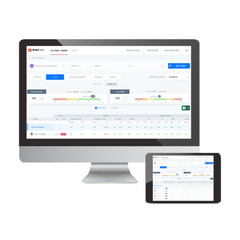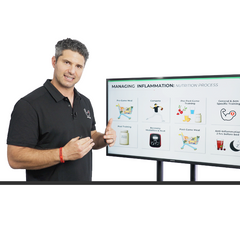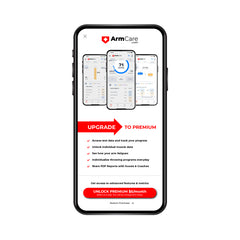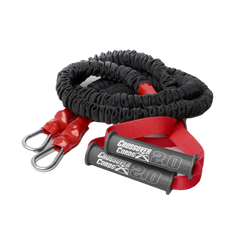Create effective throwing programs through data-led adjustments.
The ArmCare platform is an app-integrated solution that gives coaches and athletes deep insights on how the neuromuscular system is functioning with throwing arm force being the window into how to make a workload adjustment and when it is needed on the fly. The daily screen for changes in throwing arm function is the Arm Primer - a 1-min test done every day that is critical to both health and performance. Combined with other key metrics, biomechanical features associated with throwing programs, external and internal workload, coaches and athletes who take this course will have a better understanding on how to modify programs, either through intensification or regression of throwing demands. Throwing programs should be tailored to each athlete, instead of each athlete trying to fit in what is prescribed for them.
This course is over 2 hours and students will be able to identify critical elements in building throwing programs, when and how to make an adjustment, as well as critically look at workload responses that offer deeper insights than monitoring external workload values such as throw counts, measures of intensity, or previous workloads identified in acute-to-chronic ratios. This course is ultimately for the athlete and coach who is focused on individualized player development and wants to put all the pieces of the puzzle together as it relates to throwing arm health and performance.
Also, after completing the course, students will receive a handout indicating a step-by-step process on how to monitor athletes, alerts to pay attention to and how to adapt programs to optimize throwing program demands.
Gain knowledge in all factors involved in designing a plan including how to approach each phase of the throwing program as stress levels vary across long-toss, line-toss, flat ground and combined features.
Understand how to integrate strength training and the throwing program together for amateur, collegiate and professional levels for offseason throwing programming.
Learn our 16-Week offseason throwing program templates for position players and pitchers that indicates when to involve velocity enhancement programs and account for rest and progressive, undulated build-up leading to the competitive season.
Understand the biomechanical differences between all phases of the throwing program and how to adapt the throwing program based on arm strength alerts, environmental constraints, or challenges that occur throughout the offseason training cycle.
Apply principles of periodization that makes sense for throwing athletes and avoid exponential volume-load which is characteristic of throwing programs by increasing volume and intensity of throwing together for the offseason.
Be above the controversy that surrounds the “no throw period” and evaluate your athlete’s throwing arms for neuromuscular readiness early into the offseason to determine the appropriate start date for throwing programming.
Determine when to onboard bullpens and scale frequency, duration, intensity and volume throughout the offseason to ensure pitchers are ramped up progressively and minimize acute workload spikes.
Evaluate when to integrate secondary pitches in bullpens and their appropriate prescriptions - all of which guided by arm strength analytics and biomechanical data on joint loading across pitch types.
Be dynamic in-season to ensure that both starters and relievers are balancing appropriate work-to-rest ratios and that coaches and athletes are guided by arm strength and range of motion analytics.
Course Overview
It is well known that current pitch count standards are not reducing injuries throughout all levels of play. As it relates to youth and high school leagues, their inefficiency could be tied to a strong possibility that pitch count standards are not being followed. Ironically, in collegiate and professional baseball, where pitch counts are documented and routinely followed, there is no association between pitch count totals and injuries. Despite limited positive impacts on throwing arm health involving pitch counts, it is known that more throwing arm injuries are happening in non-game situations for professional pitchers and that may be happening at all levels.
Hidden throw counts, throwing workloads that are not quantified are the big problem and in this course, we are teaching students from youth to professional levels of play, how to create dynamic throwing programs as generalized throwing programs, or going by “feel” as it relates to intensity, time, distance, or number of throws can significantly contribute to pain and poor performance.
About Ryan Crotin
PhD, CSCS, RSCC
Dr. Ryan Crotin is the Executive Vice President of ArmCare.com focusing on global adoption of individualized training and assessment through a data-led approach. He also is the driving force behind ArmCareU and the ArmCare Elite community, being a comprehensive educational stream and network to advance baseball health and performance.
Ryan completed his PhD at the University at Buffalo studying fatigue-induced movement compensations in baseball pitchers.His post-doctoral fellowship in the Department of Orthopedics at the University of Pennsylvania focused on joint function and biomechanics to determine potential causes of throwing injuries.
His latest position in MLB was Director of Performance Integration for the Los Angeles Angels overseeing strength and conditioning efforts and sport science to apply physiologic-based data to improve the way athletes are coached, receive clinical care, and scouting as it relates to athletic profiling for the amateur draft.

Start Building Bulletproof Arms
Optimize on the field performance.












